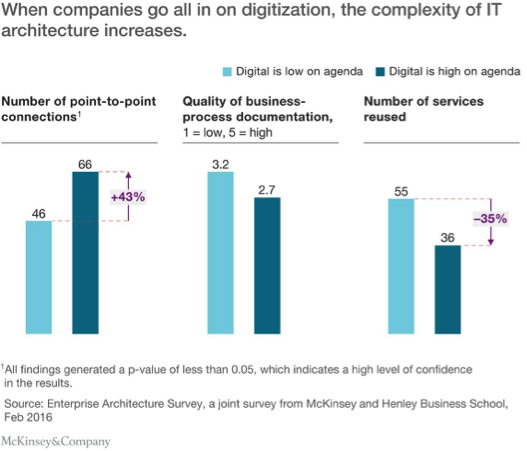Contributed by Matt Cicciari
If your IT group is like most, there is never idle time when it comes to technology demands from the organization. Keeping up can be a real burden – do any of these sound familiar?
- -- IT needs to find new ways to keep up with the pace of development and deliver solutions faster
- -- Solutions need to be mobile-friendly and flexible enough to satisfy business unit needs without compromising existing IT systems
- -- Security is paramount, but it may impact solution performance and delivery
If you are not careful and cannot respond quickly enough, you risk having “shadow IT” creep in and take control over solutions and systems into which your IT team will not have any visibility.
Why is this happening? Because the world is becoming more and more digital everyday. “Things” ranging from basic consumer products to industrial sensors are “smart” and internet-connected and contributing to a massive influx of data. That data is now accessible everywhere and consumed via mobile devices in real-time, 24x7. If your organization can transform itself into a digital business, you can turn that data into information so you can analyze it and extract insights to drive better decisions.
But digital transformation is HARD. Old behaviors - internally and externally - must change and that’s a big challenge that can take a lot of time, money, and resources. But the desired outcome is improved agility and flexibility to drive a significantly better customer experience.
Digging deeper, digital transformation allows your IT group to operate more effectively and support business needs as well as drive competitive advantage. Fortunately, in the context of adding much-needed capabilities while keeping a close eye on budgets, open-source software has become central to every IT strategy. Consider these four common use cases examples:
- New Applications – engage and delight customers and drive new revenue while addressing competitive pressures to get to market quickly.
- Application Modernization – refactor/update legacy applications to better align with current and future needs of the business.
- Replacement of Legacy DBMSs – move away from expensive, restrictive DBMSs to lower your total cost of ownership and gain agility and flexibility.
- Cloud Re-platforming – take advantage of modern infrastructure and DevOps processes to reduce time-to-market and lower cost.
The challenge for IT is evaluating the myriad of open-source technologies which address numerous organizational needs. It becomes very hard to decipher which technology or group of technologies are right for your business for today and tomorrow.
In August 2016, McKinsey & Company found that when companies actively pursue digital transformations, the complexity of their technology operations can increase significantly.

When dealing with IT architecture, complexity equals risk. Therefore, you need to find a way to leverage new technology without introducing more complexity and risk – but how? According to the article by Oliver Bossert and Jürgen Laartz, How enterprise architects can help ensure success with digital transformations:
“Those who design and steer the development of the technology landscape can mitigate risk by setting operating standards and promoting cross-functional collaboration.”
In the context of a DBMS selection, consider the following three characteristics to help simplify your IT architecture:
- Data Platform: the DBMS should be multi-model, open source-based, and part of a larger platform that can support a broad range of workloads and applications like mobile, analytics, transactional, Web, Internet of Things (IoT), etc. while making developers and database administrators more productive.
- Leverage Existing Investments: reuse and maximize existing investments in legacy applications, staff skills, and infrastructure to increase return on investment with minimal risk.
- Credibility: choose a vendor that is industry-recognized and focused on enterprise needs to ensure your success long term.
Give your enterprise architects and their teams the visibility and control they need to make the right decisions and they will deliver. For additional guidance on how to navigate your digital transformation journey, contact us to start the conversation at sales@enterprisedb.com.
In part two of our five-part Digital Transformation series, we will explore delivering New Applications.
Matt Cicciari is Director of Product Marketing at EnterpriseDB.
